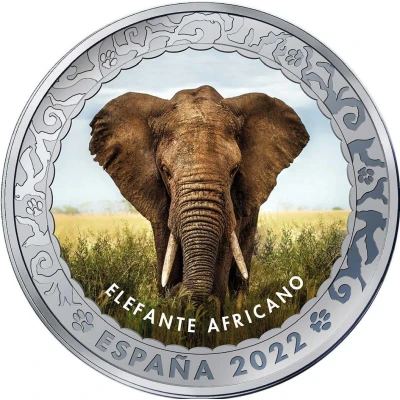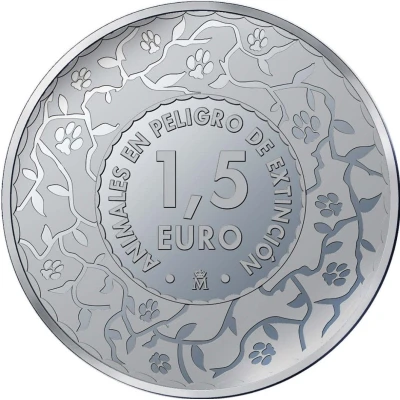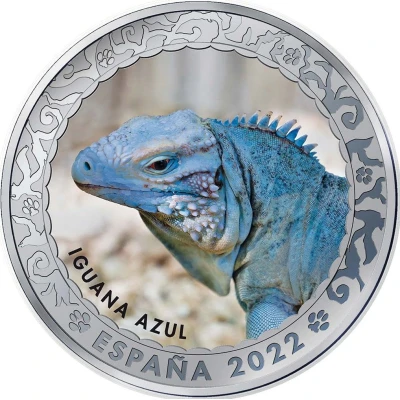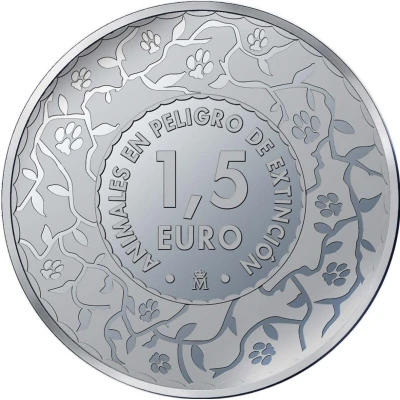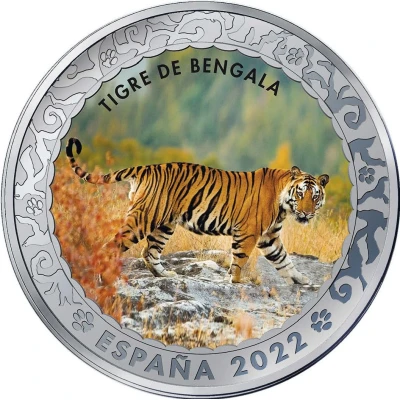
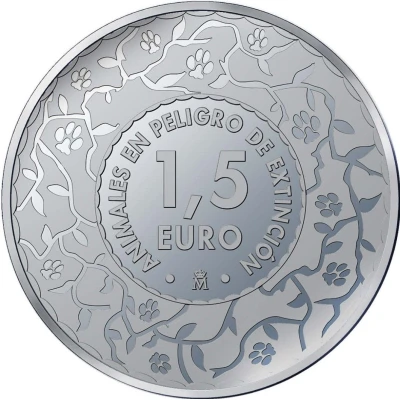

© Real Casa de la Moneda
1.5 Euro Bengal tiger
2022 year| Copper-nickel (75% copper, 25% nickel) | 15 g | 33 mm |
| Issuer | Spain |
|---|---|
| King | Felipe VI (2014-date) |
| Type | Non-circulating coin |
| Year | 2022 |
| Value | 1.5 Euro 1.50 EUR = USD 1.65 |
| Currency | Euro (2002-date) |
| Composition | Copper-nickel (75% copper, 25% nickel) |
| Weight | 15 g |
| Diameter | 33 mm |
| Shape | Round |
| Technique | Milled, Coloured |
| Orientation | Medal alignment ↑↑ |
| Updated | 2024-10-07 |
| Numista | N#348792 |
|---|---|
| Rarity index | 93% |
Reverse
On the outside part of the the reverse (common to all the coins), floral designs and animal tracks.
Script: Latin
Lettering:
ANIMALES EN PELIGRO DE EXTINCIÓN
1,5 EURO
M
Translation: Endangered Animals
Edge
Plain
Comment
There are several subspecies of tigers, all of them endangered, with the Bengal tiger being the best known, with just 2,500 living in the wild. The largest of all the planet's felines lived just over a hundred years ago in most of Southeast Asia, the Middle East, Russia and even Turkey. Of the estimated 100,000 tigers that existed at the beginning of the 20th century, their population has been reduced by 95%, with only 4,500 tigers, due to hunting for their skins, as trophies, and the advance of human civilisation with the consequent loss of their natural habitat.The morphology of tigers varies from one subspecies to another, the Bengal being the second largest, with an average weight in the case of males of about 200 kg, a length of 3 metres (including tail) and a height of more than one metre. The orange-coloured coat (white in the abdominal area) with black stripes is a constant in all subspecies of tigers, although in the Bengal there are individuals with only white coat and black stripes -the so-called white tigers-, due to the fact that their organism does not produce pheomelanin, responsible for the orange pigment.
Very territorial animals, they require large areas of land to hunt. Like almost all felines, they are solitary animals and only gather with others of their species during the rutting season. They have virtually no natural predators, except for other tigers, and any terrestrial animal can form part of the diet of this huge carnivore.
Unlike many felines, Bengal tigers are water-loving animals, abundant in the jungle and forest environment in which they live, for which they are excellently adapted. Their claws have developed interdigital membranes that allow them to swim easily and quickly. They share with the other members of the Felidae family an extraordinary sense of hearing and sight.
Interesting fact
The Bengal tiger coin from Spain features a unique design that showcases the majesty of the Bengal tiger, with its powerful stance and striking stripes. The coin's obverse side features the tiger's face, while the reverse side depicts the tiger's body and habitat. The coin's design is so detailed and realistic that it looks like a photograph, making it a truly stunning piece of numismatic art.
Price
| Date | Mintage | VG | F | VF | XF | AU | UNC |
|---|---|---|---|---|---|---|---|
| 2022 M | 5000 | - | - | - | - | - | - |
Values in the table are based on evaluations by sales realized on Internet platforms. They serve as an indication only for 1.5 Euro (Bengal tiger) 2022 coin.
